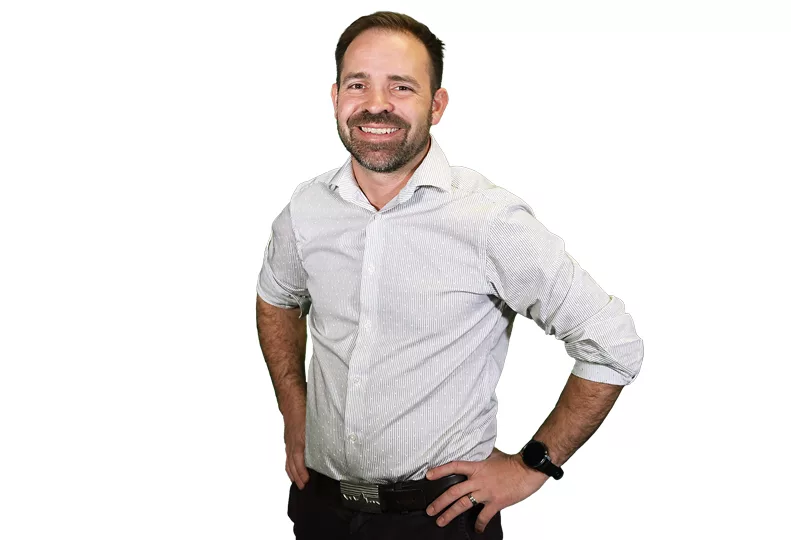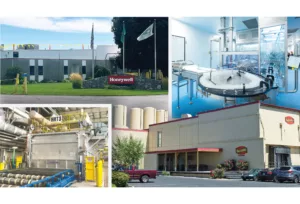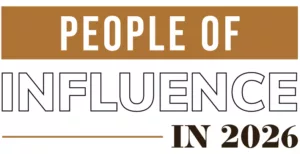Meet & Greet with new YMCA of the Inland Northwest CEO Kaylan Sisco

Kaylan Sisco landed in Spokane a couple of months ago as the new CEO of YMCA of the Inland Northwest, replacing the retiring leader, Alan Lesher.
Sisco earned his first job at a YMCA when he was 17 years old and living in Springfield, Missouri. Since then, he's moved up through the ranks of the organization, working at YMCA facilities in North Carolina, Colorado, Idaho, and Oregon after his start in Missouri.
For nine years prior to accepting the job in Spokane, Sisco worked as CEO of Tillamook County Family YMCA, in Oregon.
The Journal sat down with Sisco earlier this month to talk about his career, his outlook on leadership, and the future of the YMCA operations here.
You worked as CEO of the Tillamook (Oregon) YMCA before coming to Spokane. What was that like?
It is just a skosh smaller (laughs), about 25,000 people in the county.
But it's a cornerstone Y. It's a big piece of a very generous community, and the Y there is ingrained in all of the things that Tillamook has to offer.
When I first came in, it was a financial turnaround, and so that was part of my role was turning around the finances and the overall operation. We went from multiple years of net losses and turned it into a thriving community center relatively quickly.
How did you turn it around? What did that look like?
I asked a lot of questions of the community. What do you want the Y to do?
A lot of communities that have YMCAs, they don't understand that a Y can do anything. The only reason we're here is because the community supports us and puts us here. It's about getting less prescriptive as an organization and as a leader and saying, 'OK, you want us to do this? This is what we'll do for you,' rather than us coming in and saying, 'Hey, here's what we can and should and would do for you.'
That's what we did in Tillamook. We did the same thing in Sun Valley, Idaho, the YMCA I was at before that. I was the associate executive director of that Y, and it was a turnaround as well.
I see the same thing here, just asking the questions. What does your community want out of your YMCA? We just asked the questions and make sure that we're showing up in the right way. Ultimately, that's our responsibility.
Were there similarities between Tillamook and Sun Valley?
The strategy is always the same, and the outcome, which is a thriving community, is always the same. But the deliverables are a little different.
Would you describe this job as a turnaround project?
Kind of. We are operating at a deficit and have been for the past few years. Like with a lot of large businesses, COVID made it a struggle, and we haven't really recovered from that. So, yeah, it's similar, but it's not an insurmountable situation. I don't think we're in dire straits, as some other organizations might be in other communities.
That leads to the next question, which is, what is your first order of business here?
I go back to what I said earlier. I'm not a prescriptive person. It's just meeting the right people and finding out, what does the community want this organization to be? Because the Y belongs to the community.
We're already talking with the school district, talking with Spokane Parks about the great Together Spokane initiative that they're putting together and how we can lend support to that.
The thing with the Y is that it's different in every single community, because it depends on what that community has and needs. If somebody else is offering a program or a service, then we're not gonna come in and offer and try to compete. We want to complement.
In Tillamook, for example, we purchased a local bowling alley that the community wanted us to purchase and renovate to make that a part of our programs and services.
That's what I love about the Y. The Y can literally do anything. We've just got an amazing infrastructure and amazing team and amazing people that can just make things happen.
What can you tell us about the Glenrose project, (where the YMCA has bought land on the Moran Prairie for an envisioned $30 million to $40 million new facility)?
Our south Y is busy, but it's in a retail center, and it doesn't have all the amenities that the community's asking for. I can't speak to it too much, because I don't know much more than the case studies we've done on it. But I think there's a need for a facility there, from first glance.
That said, all the economics are working against us in this current moment, with the cost of goods and just everything else. I think we'll do that project, but I don't know where it'll fall into our strategies and timeline.
We haven't launched a capital campaign yet, but it is needed. We'll see exactly what that need looks like in the coming years.
I think our overall organizational approach to fundraising is going to be more intentional, because that's part of what we need to do for our business model. We do need to increase our fundraising to be a little more intentional, and that'll help offset our deficit.
This interview has been edited for length and clarity.


_c.webp?t=1763626051)

